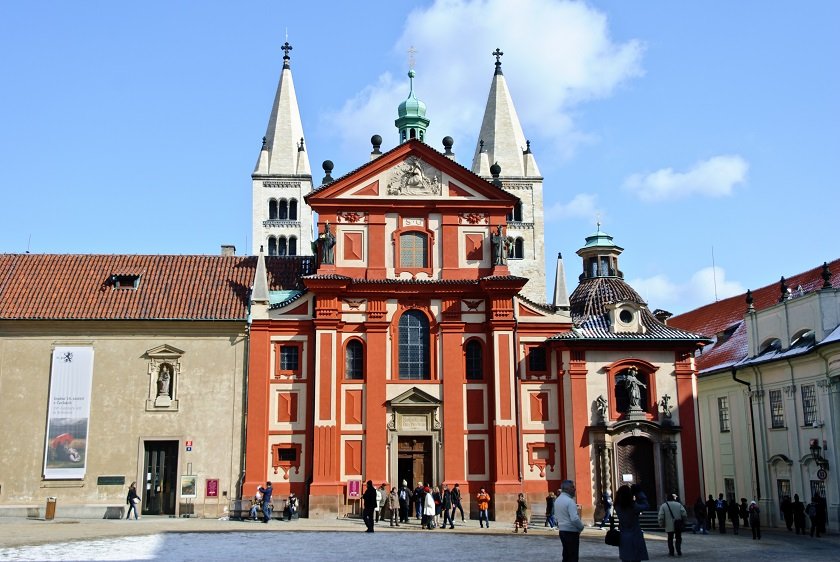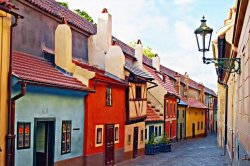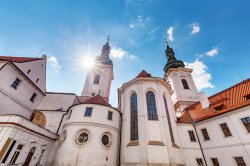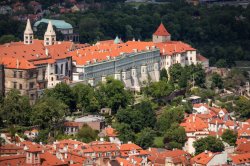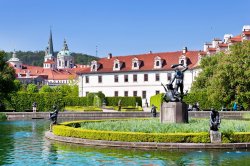St George’s Basilica
St George’s Basilica is the oldest preserved building in the Prague Castle complex. At the time of its foundation, it was the second Christian church in Prague. In 920, it was founded by Duke Vratislaus I of Bohemia, of the Přemyslid dynasty – the first Czech ruling dynasty. St George’s Basilica was used as the official burial site for the Přemyslid dynasty until St Vitus Cathedral was finished. The southern side of the basilica was extended by a chapel and later the remains St Ludmila, the first Czech patron saint, were deposited there. Later the first female Benedictine monastery was established next to St George’s Basilica, becoming its part. The second shrine of Prague Castle was originally a single-nave church; however, only its foundations have been preserved. After a fire in the 12th century, the basilica underwent extensive reconstruction and was rebuilt in Romanesque style. The basilica is dominated by two big towers and the Baroque façade that was added much later.
Useful information for visitors
Public transport connections
Pražský hrad tram stop
Opening hours and admission
For information about the opening hours of St George’s Basilica, visit official website here. For information about admission fees and tours, click here.
St George’s Basilica is also used as a venue for classical concerts (which usually take about 60 minutes). Tickets can be purchased here.
Interesting facts about St George’s Basilica
The interior of St George’s Basilica is in Romanesque style – plain but monumental. There are stunning frescoes depicting the Heavenly Jerusalem, Jesus Christ and other figures. Visitors can also see the 14-century tomb of St Ludmila, the three-nave crypt and the square chancel with an apse. The main nave contains the tombs of some of the members of the Přemyslid dynasty, for example the father of St Wenceslas and Duke Vratislaus I. In the 18th century, the Chapel of St John of Nepomuk was added to the basilica, designed by architect František Maxmilián Kaňka.
